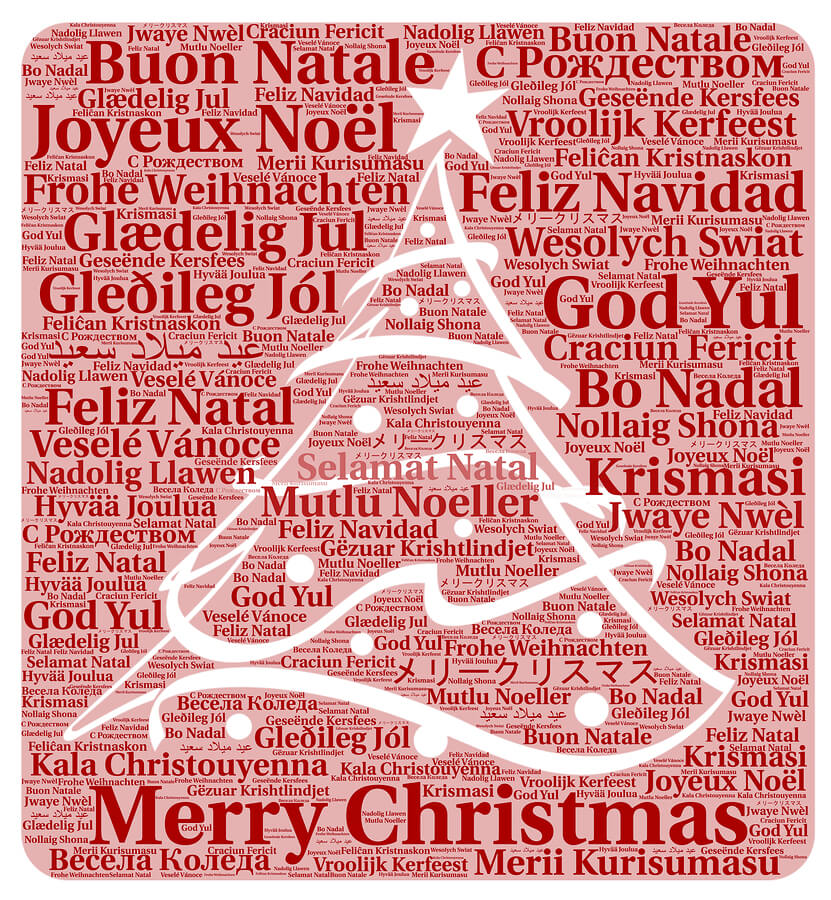Here are some interesting Christmas traditions from around the world.
Christmas in Australia
In Australia, the summer is the season when Christmas is celebrated so in most parts it is humid and hot. This is due to the earth’s tilt as Australia is in the southern hemisphere. In Australia, Christmas is a public holiday and it is the one time in the year in which Australians share with family and friends where they come together to exchange presents and enjoy great food and drink. One of Aussies’ favorite foods for this time of the year is cooked prawns which are harvested just for this occasion.
Street parties are also very popular (pre-Covid at any rate!). At times in the evening on Christmas Day, you might have seen impromptu street parties taking place and the streets are packed with families and kids. Because it’s summer you are more likely to spot a board short-wearing Santa out surfing on a surfboard than one under a Christmas tree covered in snow!
Cricket is on the sports agenda too, so cricket fanatics often organize their Boxing Day activities around watching this favorite Aussie sport. Once the family gatherings are over, people usually catch up at friends’ houses to watch the Boxing Day Cricket Test. This typically involves a group drinking beer with eyes glued on the cricket on TV while another group of people drink beer and don’t bother to watch the cricket.
Boxing Day also sees the start of the Sydney to Hobart yacht race so sailing fanatics are glued to the TV watching traumas unfold on the notorious Bass Strait.
Christmas in Germany
The Christmas tree is important at Christmas time in Germany. Its use dates back to the late Middle Ages. If young children are in the home, the tree is normally secretly decorated by the children’s mother and is brought into the home on Christmas Eve. In some of the more religious parts of Germany, Christmas songs are sung, like Silent Night. In German these songs include “O Tannenbaum,” “Ihr Kinderlein Kommet” and “Stille Nacht.” Christmas Eve is the time set aside when Germans swap presents within their families.
Germany is known for Christmas markets and all different types of Christmas food and decorations are commonly sold at the markets such as glass ornaments.
Christmas in Italy
One of Italy’s Christmas traditions is when many Italian families have a Nativity crib in their homes. This was made popular in 1223 by St. Francis of Assisi. Sometimes you can find the Nativity scene displayed in a pyramid shape which is meters tall and is built in several tiers, decorated with colored paper, golden-colored pinecones, and tiny candles. The shelves on top of the scene may also contain candy, fruit, and presents.
Italians do not eat any meat on La Vigilia (Christmas Eve). Instead, they tend to eat various fish dishes, even up to 7 courses at one meal. This is a typical activity that takes place on any day & night before a religious celebration. Italians ‘eat lean’ to purify their bodies before the holidays begin. In Rome, Pezzetti, a local dish made from fried zucchini, artichoke, and broccoli is consumed, while in Naples, broccoli and seafood are sautéed.
Along with eating fish, Italians on Christmas Eve eat pasta dishes. There are different types of pasta dishes. For example, in the northern Piedmont and Lombardy, residents will eat lasagna stuffed with anchovies, whereas in Naples vermicelli with clams and mussels are more likely to be served.
Christmas in Russia
As also happens in Poland, people cover their tables and floors with hay which represents baby Jesus’s manager. A white colored tablecloth is laid which represents the clothes Jesus wore as a baby.
One of Russia’s Christmas traditions is celebrating the day on January 7th. The date isn’t the same as other countries because the old Julian calendar is used by the Russian Orthodox Church for its religious occasions. Some Russians fast on Christmas Eve until the 1st star can be seen in the sky. This is the time for eating ‘sochivo’ or ‘kutia’ which is a porridge made from rice or wheat and is served with poppy seeds, honey, fruit, chopped-up walnuts, and even fruit jelly.
Christmas in Japan
Christmas celebrations in Japan only began a few decades ago. It is not a religious holiday as not many Christians live in Japan. Today there are some customs that arrived in Japan from the United States like the sending of Christmas cards and presents. Christmas Eve is considered to be a romantic day when couples spend some time together and swap presents. Younger couples like to walk together to observe Christmas lights outside and enjoy visiting a restaurant for a romantic meal.
Eating fried chicken on Christmas Eve and Christmas Day is now a popular pastime so restaurants like KFC have to be booked early.











